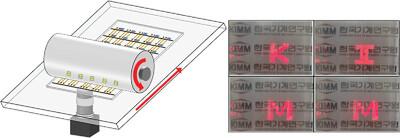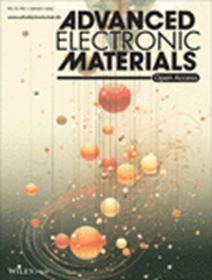Transfer of Micro-LEDs with Roll-Based Direct Overlay Alignment for Manufacturing Transparent Displays
IF 5.3
2区 材料科学
Q2 MATERIALS SCIENCE, MULTIDISCIPLINARY
引用次数: 0
Abstract
Transparent displays are crucial for various applications, particularly for their potential use as windows in future self-driving cars. These displays require high transparency, low power consumption, and high mechanical reliability. Micro-LEDs have emerged as ideal devices for the transparent displays. Efficient mass-production processes are essential for the commercialization of transparent micro-LED displays. This study presents roll-based mass transfer to enhance the productivity of transparent micro-LED displays. Roll transfer processes traditionally face resolution challenges in alignment repeatability and positional errors in both the transverse direction (TD) and machine direction (MD). This study proposes a roll-to-plate (R2P) transfer process with overlay alignment to improve the repeatability precision of the alignment. Detailed experimental analyses address positional errors in the TD and MD, attributed to initial contact errors and linear velocity asynchrony, respectively. The results demonstrate successful micro-LED transfer onto a transparent circuit board (TCB) with a maximum positional error of 3.2 µm and a 99.75% yield. The resulting micro-LED display achieves a transparency of 72.5% with 68 pixels per inch. This study overcomes the alignment challenges in the R2P process and contributes to the commercialization of transparent micro-LED displays. It is expected to positively impact the manufacturing of transparent applications that involve rolling processes.

利用基于卷轴的直接叠加对齐技术转移微型 LED 以制造透明显示器
透明显示屏对各种应用都至关重要,尤其是在未来的自动驾驶汽车中可能用作车窗。这些显示器要求高透明度、低功耗和高机械可靠性。微型 LED 已成为透明显示器的理想器件。高效的大规模生产工艺对于透明微型 LED 显示屏的商业化至关重要。本研究提出了基于轧辊的大规模转移工艺,以提高透明微型 LED 显示屏的生产率。传统的辊传工艺在横向(TD)和机器方向(MD)的对准重复性和位置误差方面都面临着分辨率的挑战。本研究提出了一种具有叠加对准功能的辊对板(R2P)转移工艺,以提高对准的可重复性精度。详细的实验分析解决了 TD 和 MD 中的位置误差问题,这些误差分别归因于初始接触误差和线性速度不同步。结果表明,微型 LED 成功转移到了透明电路板 (TCB),最大位置误差为 3.2 µm,成品率为 99.75%。最终微型 LED 显示屏的透明度达到 72.5%,每英寸 68 个像素。这项研究克服了 R2P 工艺中的对准难题,为透明微型 LED 显示器的商业化做出了贡献。预计它将对涉及轧制工艺的透明应用的制造产生积极影响。
本文章由计算机程序翻译,如有差异,请以英文原文为准。
求助全文
约1分钟内获得全文
求助全文
来源期刊

Advanced Electronic Materials
NANOSCIENCE & NANOTECHNOLOGYMATERIALS SCIE-MATERIALS SCIENCE, MULTIDISCIPLINARY
CiteScore
11.00
自引率
3.20%
发文量
433
期刊介绍:
Advanced Electronic Materials is an interdisciplinary forum for peer-reviewed, high-quality, high-impact research in the fields of materials science, physics, and engineering of electronic and magnetic materials. It includes research on physics and physical properties of electronic and magnetic materials, spintronics, electronics, device physics and engineering, micro- and nano-electromechanical systems, and organic electronics, in addition to fundamental research.
文献相关原料
| 公司名称 | 产品信息 | 采购帮参考价格 |
|---|
 求助内容:
求助内容: 应助结果提醒方式:
应助结果提醒方式:


